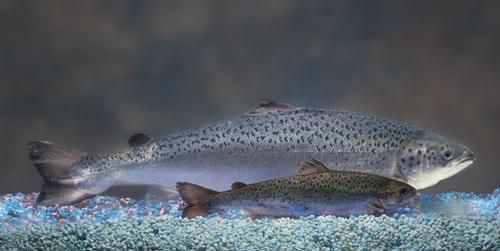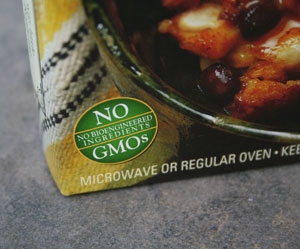Posts Tagged: biotechnology
Good neighbor farming can take the edge off the GMO debate
American grocery stores began selling GMO foods in the 1990s and today stock thousands of items that contain genetically modified corn, soybeans and other crops. To date, no evidence has come to light indicating that foods developed using genetic engineering techniques pose risks greater than food produced using traditional methods.
Still, GMO foods are rejected by a segment of the population. Critics say the long-term effects of eating GMO foods are unknown, that genetically modified genes could flow into weeds or native plants, posing ecological risks, and that higher seed prices for GMO products prevent small-scale producers from competing with large farms. Without mandatory labeling, they find it difficult to avoid products containing GMOs.
UC Cooperative Extension alfalfa specialist Dan Putnam said he is generally in favor of GMO labeling in the United States, “as long as it’s not a warning and not mandatory."
“Consumers should be able to know more or less what they’re eating,” Putnam said.
However, mandatory labeling would raise a number of questions, including what exactly is a GMO?
"Triticale (a forage fed to dairy cows) is a new species, the result of an interspecific cross between wheat and rye, created by humans in the 1950s – a GMO if there was ever one, since it never existed before humans mixed up the DNA," Putnam said.
UC biotechnology specialist Peggy Lemaux suggests a possible alternative to mandatory labeling.
"If there is widespread agreement on the need for labeling, then a market could arise for GMO-free labeled foods for which people would pay extra," Lemaux said. "This would be similar to the current situation with Kosher and organic foods. Since having access to GMO-free foods is not a matter of food safety, but food preference, this approach would lead to a situation in which only those people who want the extra information would pay for it."
The European Union, Japan, Malaysia and Australia currently require labeling on foods that contain genetically modified ingredients. Whether labeling becomes mandatory in the United States or not, supplying food to these countries requires a system for production, separation and traceability of GMO and non-GMO products.
“There is a human factor involved,” Putnam said. “Neighbors have to get along and respect each others’ points of view.”
A reasonable level of tolerance will also help farmers using different production systems to coexist with one another. It is unrealistic to expect 100 percent food purity in a non-GMO food stream, Lemaux said. A small amount of engineered genes in non-GMO food can result from pollen flow or unintentional mingling during post-harvest storage, transportation or food processing.
But coexistence of different varieties and production methods is not new to California food production. Non-GMO farmers can coexist with conventional farmers by using some of the same good-neighbor farming agreements that have long been common in the agriculture industry.
For more information on GMOs in agriculture, see the biotechnology and Roundup Ready alfalfa section on Putnam's alfalfa website and Lemaux's biotechnology website, UCbiotech.org.
UC scientist says transgenic salmon is safe
The U.S. Food and Drug Administration is considering approval of genetically engineered salmon developed by AquaBounty Technologies, a Massachusetts biotechnology company focused on improving productivity in commercial aquaculture.
Paul Olin of the California Sea Grant Extension Program says the transgenic salmon is safe for consumption and the environment.
"If we take time to learn the facts and understand the science we can all appreciate new advances in our ability to produce healthy, sustainable food with the confidence that it has been vetted by the scrutiny of the world’s best science," Olin said.
The “AquAdvantage” Atlantic salmon (AAS) has two genes that considerably hasten its growth, one from Chinook salmon and the other from ocean pout. AAS reaches market size twice as fast as traditional salmon, providing an economic benefit to farmers and enhancing the economic viability of inland operations, thereby diminishing the need for ocean pens.
AquaBounty plans to grow the hybrid fish on Prince Edward Island, ship small fish to inland recirculating production systems in Panama, harvest and process the fish, and ship food grade product back to the United States for sale. The fish for this production system would be 95 percent triploid females, as a duplicative measure to prevent reproduction. Olin said triploid crops have an extra set of genes and are widely used in agriculture including such apple varieties as Gravenstein and MacIntosh, and seedless bananas, watermelon and grapes.
Olin cited a 2008 scientific review, published in the Journal of the Royal Society of Medicine, that said GM foods had been eaten by millions of people worldwide for 15 years, with no reports of ill effects.
"New technologies to genetically improve food and animal crops are one tool to supply the additional food people will need in the future, improving human health, reducing the use of pesticides and fertilizers, and reducing the carbon footprint of animal and plant agriculture," Olin said.

AqaAdvantage Salmon
Food: friend or foe?
Healthy eating has gotten complicated. Fresh fruits and vegetables pack the produce aisle as never before. And new food products with added health benefits are being introduced all the time. Yet the food supply, and the agricultural system that supports it, has become increasingly criticized for its impact on the waistlines of millions of people in the United States.
“Agriculture and conventional food systems have provided the basis for long and healthy lives, and much of that improvement can be traced to healthier diets,” says UC Davis plant sciences professor Alan Bennett. “At the same time, we are faced with a growing critique that conventional food systems are a significant contributor to the health crisis that developed countries are facing, particularly related to obesity and diabetes.”
This dichotomy — that agriculture is both the problem and the solution to an increasing health crisis — is the backdrop for the 22nd annual conference of the National Agricultural Biotechnology Council (NABC) at UC Davis June 16-18. The conference, “Promoting Health by Linking Agriculture, Food and Nutrition,” will examine ongoing research strategies to promote health through food and diet, as well as how governmental regulatory systems provide oversight of the relationship between food and health.
Leading food, nutrition and agricultural scientists from around the country will be participating in sessions with topics such as designing and producing healthy food, social and cultural dimensions of eating habits, bringing nutrition science to regulations, and how business can find food and nutrition innovations.
NABC has been hosting annual public meetings about the safe, ethical and efficacious development of agricultural biotechnology products since its formation in 1988 by the Boyce Thompson Institute in collaboration with UC Davis, Cornell University and Iowa State University. Today the organization consists of 36 leading agricultural research and teaching universities, governmental agencies and institutions in the U.S. and Canada.
“With health care consuming so much of the developed world’s resources, there is a critical need to understand how diet, nutrition and the underlying agricultural production systems impact human health,” Bennett said.
More detail about the conference agenda, program speakers and online registration is at http://nabc.ucdavis.edu/.



